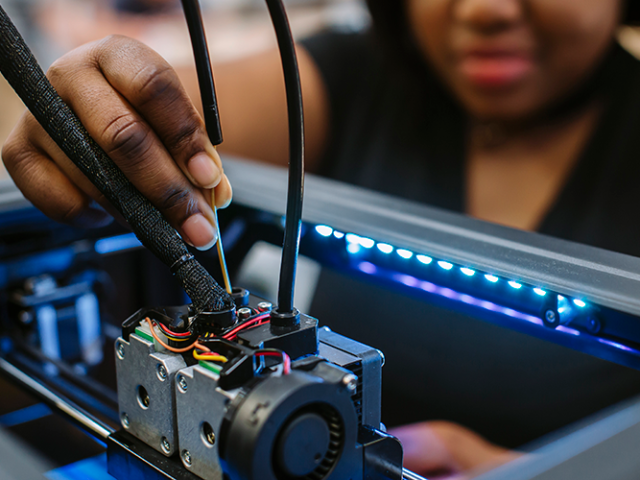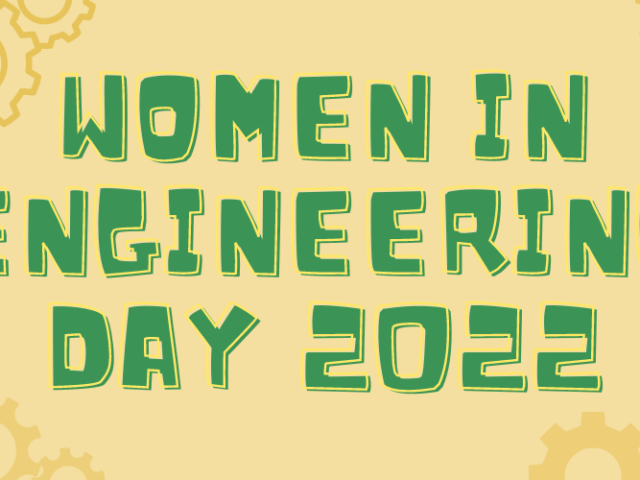Ever since the early days of aeronautics and spaceflight, engineering has been the backbone of NASA’s greatest accomplishments.
NASA’s engineers continue to represent the leading edge of human innovation as the agency moves forward with ambitious plans to return humans to the Moon, enhance our understanding of the universe, and advance technologies for aircraft and airspace.
Challenges are best tackled by a mix of talented people from a variety of backgrounds who can bring a range of perspectives and experiences to the table. NASA’s female engineers shared important things they didn’t know about engineering when they were girls first introduced to the career field that they would one day thrive in as professionals.
1. Teamwork is essential
When she first decided to go into engineering, Kelly DeRees, a Project Engineer in the Extravehicular Activity and Advanced Exploration Tools group at NASA’s Johnson Space Centre in Houston, worried that would mean “sitting in a lab alone, tinkering.” But she discovered during her NASA internships that teamwork is an integral part of the job.
“You can’t do big, challenging things like sending people to space without a big team of people,” she said. Today, DeRees is part of the team developing spacecraft hardware and the tools astronauts will use during extravehicular activities (EVAs) – commonly known as spacewalks – on the Moon during the Artemis missions.
Relatedly, “It’s really important to identify your own strengths, and the strengths of your coworkers or even your classmates,” said Elaine Stewart, a Contamination Control Engineer for the James Webb Space Telescope at Goddard. “It’s better to create a team of complementary strengths and weaknesses so that you have a comprehensive team. The collaborative environment of engineering is really valuable.”
2. Communication is key
“Being a successful engineer requires you to effectively communicate and build relationships in order to work efficiently with your team,” said Stacie Turner, an Electrical Engineer at NASA’s Kennedy Space Centre in Florida.
Turner serves as the project strategic manager for the Gateway Program’s Deep Space Logistics Project office, which will provide for the transportation of cargo, equipment, and consumables to the Gateway lunar outpost for NASA’s Artemis missions. In this role, Turner manages strategic planning, research and technology investments, external outreach and communications, and team culture and collaboration.
Those “soft skills” are vital, said Estela Buchmann, a navigation, guidance, and control systems engineer in the Aerospace Simulation Research and Development Branch Division at Ames. Buchmann works alongside teammates who have a wide range of experience and varied educational backgrounds.
“Joining clubs and participating in activities that pique your interests is a great way to develop soft skills – like leadership, communication, and the ability to work with others – which will prepare you for future career opportunities.”
In addition to communicating with teammates, it’s also important to be able to explain complex projects – and their value – to stakeholders.
“You could be doing ground breaking research,” Stewart said. “But you have to be able to effectively communicate that to someone who is not at all from that field – or not at all in STEM – in order to reach all audiences.”
3. It’s more than just mathematics
Engineering means solving problems or innovating by applying math and science in a practical way. But it also means learning new ways to approach problems.
“I quickly discovered that engineering involves so much more than just math,” Turner said. “You learn so many skills in the engineering disciplines. Engineering teaches you how to be a methodical and strategic thinker.”
4. There’s room for creativity
Don’t shy away from your inner artist! Creativity complements engineering and can lead to innovation.
“People tend to separate arts and engineering,” said Stewart, who enjoys dancing and crafts, and also plays the flute. She wasn’t sure she could bring her creative side to engineering, but she discovered NASA values creativity.
“If we didn’t allow engineers to be creative, we wouldn’t be as successful. For example, if the Webb Telescope hadn’t been built as an origami-like, foldable telescope, the team would have had to significantly decrease the science it will be able to accomplish,” she said. “You can use creativity to engineer solutions.”
5. You won’t know everything at first – and that’s OK
College/university teaches the fundamental knowledge needed in any given engineering discipline – but there is no replacement for learning on the job.
“I came out of college thinking I’d stay in my discipline ‘lane,’ but in the workforce, I engage with a lot more disciplines,” said Teang “Anne” Tripathi, an EVA hardware manager at Johnson.
“Questions were thrown at me and I thought I didn’t have the expertise. In school, when you’re taking tests and solving problems, you need to get to the answer right then and there. But on the job, you can say, ‘Let me get back to you on that.’”
Dr. Wendy Okolo, an Aerospace Engineer at NASA’s Ames Research Centre in Mountain View, California, has found that her method of taking steps back to understand and solve problems can also boost confidence and counteract “impostor syndrome.”
“I learned to say to myself, ‘I don’t have to know it now, but give me some time, and I’ll figure it out,’” said Okolo, who serves as the associate project manager focusing on national airspace safety. “’I’ll ask all the questions and do what’s necessary to understand the problem and break it down.’”
Don’t be discouraged or afraid to ask questions at first, said Sandra Irish, an Aerospace Engineer who supports the James Webb Space Telescope as the mechanical systems lead structures engineer at the agency’s Goddard Space Flight Centre in Greenbelt, Maryland.
“This especially goes for women,” she said. “We often want to overachieve to compensate for being a minority in this field. It can be frustrating to have questions or need help, but good organizations give you the time and tools you need. Asking questions doesn’t show weakness – it shows you have the ability to learn.”
6. You can do it!
Students considering engineering should be open-minded and patient as they weigh their options but be assured that a rewarding engineering career is within reach.
“Like many new college students, I was uncertain of a career path,” Buchmann said. “I was fortunate to have a great community college math instructor who recognised my potential and encouraged me to pursue a career in engineering.”
“It doesn’t matter what gender you are. STEM is for everyone,” Tripathi said. “Don’t let lines and boxes prevent you from finding solutions.”
Finally, keep an eye out for opportunities to get first hand engineering experience.
“There are a lot of really great NASA STEM education programmes out there,” said DeRees, who now serves as a technical expert for Artemis EVA-focused Micro-g NExT challenges. “That’s really what made me confident enough to start pursuing engineering. It made a huge difference for me.”




